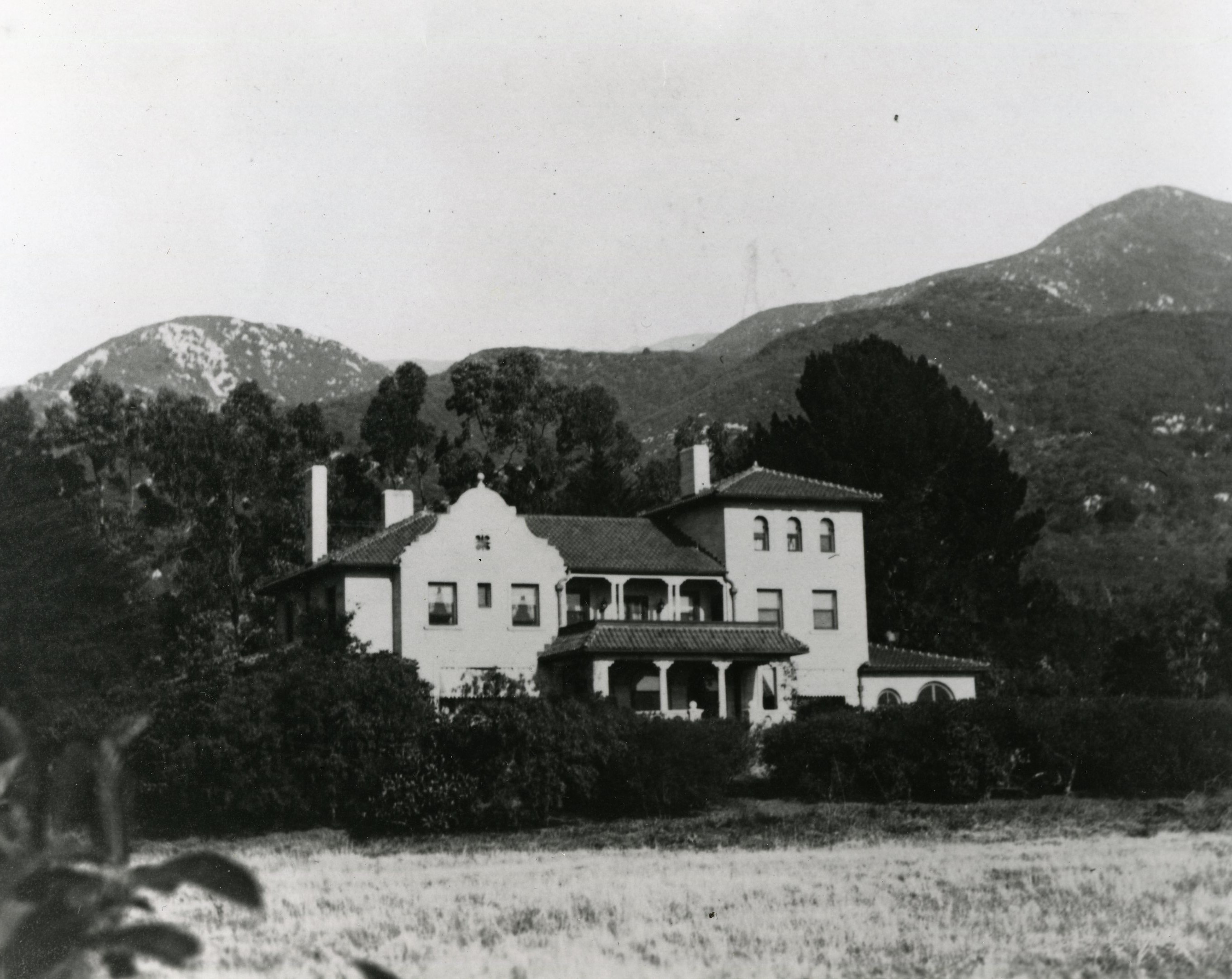Riven Rock
History 101

The publication of T.C. Boyle’s novel Riven Rock in 1998 heightened interest in Stanley and Katharine McCormick. Riven Rock was the name of the couple’s 87-acre Montecito estate located in the area of the confluence of Cold Springs and Hot Springs creeks. For some 40 years, Stanley McCormick was confined here due to debilitating mental illness.
Stanley, born in 1874, was the youngest child of Cyrus and Nettie McCormick. The elder McCormick had amassed a large fortune due to his invention of the grain reaper and the founding of the family firm that eventually became International Harvester. Stanley was educated by the finest private tutors and preparatory schools before graduating with honors from Princeton in 1895. He then traveled in Europe with his widowed mother (Cyrus died in 1884) and studied art in Paris. He returned to the U.S. to take up a position in the family business.
In 1904, Stanley married Katharine Dexter. She had taken a degree in biology at MIT, the second woman to graduate from that institution. Within the next few years, Stanley would evidence increasingly severe symptoms of schizophrenia, and by 1908 he needed constant care. The family brought Stanley west and ensconced him at Riven Rock, recently vacated by Stanley’s sister Mary Virginia, who also suffered from mental illness.
The McCormicks had visited this area since the late 1880s. They purchased the estate in 1896 and the following year began construction of a large, two-story Mission Revival–style house of stone. The estate name came from an oak tree near the main gate, which was growing out of and had split a large boulder. Over the next decades the estate became a showplace; exotic plants were imported from Japan, a six-acre lemon orchard was planted, and the estate had its own dairy. Handcrafted stone walls and bridges dotted the landscape.
The family hired the eminent behavioral scientist Dr. Gilbert Van Tassel Hamilton, who operated a primate laboratory at Riven Rock in the hope that this work would result in a cure for Stanley’s problems. Unfortunately, help for Stanley was not forthcoming; periods of lucidity alternated with bouts of dementia, even violence.
Everything was done to see to Stanley’s comfort and happiness. A nine-hole golf course was constructed, a musical director hired, a theater built for live performances and movies, a large art collection developed. Periodically, Stanley was driven in one of the Rolls-Royces to the family’s beach cottage at Sandyland. Yet such was his condition, Katharine was basically forbidden to see her husband. She spent much of the year in Boston and usually stayed at a hotel when here. Stanley’s mother took to viewing her son from afar with binoculars.
In the late 1920s, a dispute over Stanley’s care pitted Katharine against Stanley’s brother Harold and sister Anita. Harold at the time was married to Ganna Walska, later owner of Lotusland. Both sides engaged distinguished counsel; Katharine hired Newton D. Baker, who had been the secretary of war under Woodrow Wilson. In 1930, a judge decided in favor of Katharine. The search for a cure continued; upkeep of the estate and care for Stanley annually amounted to $250,000-$300,000.
Stanley died from pneumonia in 1947, and Katharine died at age 92 in 1967. Riven Rock’s great main house was razed after the 1925 earthquake, and the estate has been subdivided with many of its out-buildings now serving as residences. And the oak that give the McCormick estate its name died a number of years ago.
Michael Redmond is the director of research at the Santa Barbara Historical Museum.



